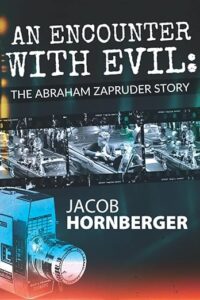Tomorrow, February 7, is when we are supposed to learn about President Trump’s “plan” for releasing CIA records relating to the assassination of President Kennedy, which the CIA has steadfastly and fiercely kept secret for more than 60 years — on grounds of protecting “national security” of course.
I remain doubtful that all of those decades-old records will be released, for the simple reason that I don’t believe that the CIA is going to permit Trump to disclose those records. I think it’s much more likely that the CIA will let Trump do what he did the last time he was president — release some records while keeping the rest secret. That would enable Trump to crow publicly about how he “released the JFK records” while the incriminating records continue to be kept secret.
After all, why didn’t Trump simply issue an order to the National Archives to immediately release all of the long-secret JFK-assassination-related records in its possession? Why didn’t he simply order the CIA to disclose all of its files on CIA officer George Joannides, who played a critically important role in the JFK saga? Why doesn’t he issue such orders today and just forget about coming up with a “plan” for releasing the records? What next? A committee to study the problem and come up with a report six months from now? (For more on Joannides, see FFF’s book Morley v. CIA: My Unfinished JFK Investigation by Jefferson Morley and Morley’s January 30, 2025, article “JFK Most Wanted: The Joannides File.)
 In any event, if and when those long-secret records are ever released, one thing I can say with 100 percent certainty: They will not include any records documenting the CIA’s dealings with the famous Zapruder film, the film in which Dallas businessman Abraham Zapruder captured the JFK assassination. That’s because such records would have documented the CIA’s participation in the cover-up of the national-security establishment’s violent regime-change operation in Dallas on November 22, 1963.
In any event, if and when those long-secret records are ever released, one thing I can say with 100 percent certainty: They will not include any records documenting the CIA’s dealings with the famous Zapruder film, the film in which Dallas businessman Abraham Zapruder captured the JFK assassination. That’s because such records would have documented the CIA’s participation in the cover-up of the national-security establishment’s violent regime-change operation in Dallas on November 22, 1963.
I detail the CIA’s dealings with the Zapruder film in my book An Encounter with Evil: The Abraham Zapruder Story. The reason I consider this book so important is that it outlines the steps that the CIA secretly took on the very weekend of the assassination to produce an altered copy of the film, which became the extant “original” film that today rests in the National Archives and that we see on the Internet.
Why is that important? Because there is no innocent explanation for a fraudulent film, any more than there is an innocent explanation for a fraudulent autopsy. A fraudulent film automatically means criminal culpability in the assassination itself. There is no way around it. (For details relating to the U.S. military’s fraudulent autopsy on JFK’s body at Bethesda National Military Hospital on the very evening of the assassination, see my book The Kennedy Autopsy.)
Ever since the day after the assassination, the official narrative has been that the Zapruder film was shipped to LIFE magazine in Chicago. As each decade passed since then, the CIA never made any effort to disavow that official narrative.
In the late 2000s, however, a man named Dino Brugioni came forward and disclosed that the official narrative was false. Who was Brugioni? He was the world’s most renowned photo analyst. Equally important, he worked for the CIA — for 35 years. At the time of the JFK assassination, he worked in the CIA’s National Photographic Interpretation Center (NPIC) in Washington D.C. He had helped analyze the photographs of Soviet missiles during the Cuban Missile Crisis. Among his books is Eyeball to Eyeball, a history of U.S. imagery intelligence. For a more detailed biographical sketch of Brugioni, see his Wikipedia page here.
In the late 2000s, Brugioni disclosed that on Saturday night, November 23, 1963— the day after the assassination — he and a CIA photographic team were summoned to NPIC, where two men identifying themselves as Secret Service agents delivered the original 8mm Zapruder film to Brugioni. The film was viewed on an 8mm projector. Brugioni and his team were asked to make “briefing boards” on which selected images from the film were to be displayed.
From a legal standpoint, Brugioni should not have been disclosing this episode, not even in the late 2000s. That’s because he had been told that it was a highly classified operation. Since Brugioni had never been released from his vow of secrecy, he had to know that conceivably he could be criminally prosecuted for disclosing that Saturday night operation. He obviously concluded that federal officials would’t dare to do so and decided to go ahead and disclose the truth.
In my opinion, it would be standard procedure for Brugioni’s boss, Arthur Lundahl, who had instructed Brugioni and his team to report to NPIC, to type up a report of what had happened that night. That’s normally the way government bureaucracies work. But that’s assuming that operations are legal, legitimate ones. Given that this particular operation involved a cover-up of the national-security establishment’s assassination of a U.S. president, the standard procedure would have been to not put anything about either the assassination or the cover-up in writing.
One thing is for sure: Any records relating to the Zapruder film, including a written report of the Brugioni operation, would be considered an assassination-related record. Therefore, if such a record existed, the CIA was required to turn it over to the Assassination Records Review Board in the 1990s.
But no such record was turned over. Moreover, it is a virtual certainty that it is not among the still-secret assassination-related records being held by the National Archives because the CIA would have been required to show that releasing information about the Brugioni operation would have threatened “national security” and, therefore, required another 25 years of secrecy. There is no way that the ARRB would have bought that argument.
It gets better. On Sunday night, an entirely different CIA photographic team was summoned to NPIC, where a man identifying himself as a Secret Service agent named Bill Smith delivered what was represented to be the Zapruder film. He stated that he had just brought the film from Hawkeyeworks, a top-secret CIA photographic facility located in Kodak’s headquarters in Rochester, New York.
A CIA official at Hawkeyeworks told Brugioni that they could do “anything” at Hawkeyeworks. In other words, whatever Hollywood could do with film, the photographic experts at Hawkeyeworks could match. That would have included producing a top quality altered copy of a film using what was called an “optical printer.”
Once again, if everything was on the up and up, there would naturally have been a written report of the Zapruder film being delivered to Hawkeyeworks and detailing what the CIA did with the film at that facility. No such record has ever been released, including to the ARRB.
The same holds true for the Sunday night operation, where new briefing boards were prepared for images taken from the altered copy of the film, which became the new original.
It is worth mentioning that the Saturday night and Sunday night operations were tightly compartmentalized. That is, the Saturday night team never knew about the Sunday night operation and vice versa. In fact, when Brugioni learned about the Sunday night operation in the late 2000s, he was shocked to learn that that had been kept secret from him, especially since he was not only the second in command at NPIC, he was also serving as duty officer in charge at NPIC on the weekend of the assassination.
(Note: Even though Hawkeyeworks was secretly located in the research and development center at Kodak’s national headquarters in Rochester, there is no evidence that Kodak officials participated in the Zapruder film operation.)
How do we know that the Sunday night film was an altered copy of the original? Several reasons, which I detailed in my book An Encounter with Evil.
One reason is that the Sunday night copy was a 16mm film, as the CIA team on Sunday night confirmed. The Zapruder film was a 8mm film. It is impossible to convert a 8mm film into a 16mm film. Therefore, the 16mm film had to be a copy. Once it was slit down the middle, it became the new 8mm Zapruder film.
Another reason is that when Brugioni was shown the extant film after he disclosed the Saturday night operation in the late 2000s, he unequivocally stated that the film he saw on Saturday night was significantly different from the film he was now being shown.
Another reason is that using modern-day film technology, various film experts who have examined the extant film have demonstrated the altered nature of the film, as I detail more fully in my book.
It’s also worth noting that there was absolutely no reason to take the film to Hawkeyeworks, except to produce a top-quality altered copy of it.
Thus, even if Trump follows through with his vow to release all — repeat all — of the still-secret JFK-assassination-related records, it is a virtual certainty that such records will not include any reference to the CIA’s classified operations on the Zapruder film on the very weekend of the assassination. That’s because such records were never created or because they were later destroyed. It would have been much too dangerous — and very dumb — to disclose them.
One can purchase An Encounter with Evil: The Abraham Zapruder Story at Amazon.



